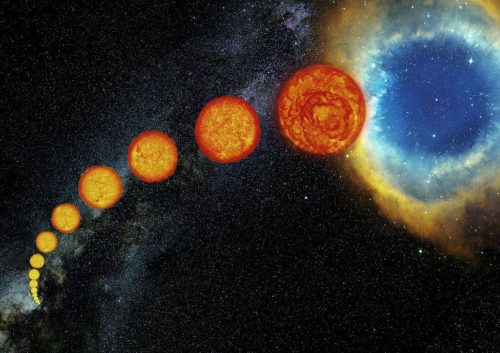Was the Sun Fainter in the Past?
Genesis 1:16
“And God made two great lights; the greater light to rule the day, and the lesser light to rule the night: he made the stars also.”
 Those who believe in the theory of evolution are not always aware of all the implications of their belief. They usually do not realize that their belief leads inevitably to ideas that we can show are impossible. And if such impossible corollaries are pointed out to them, these would usually be dismissed because they assume that evolution has been proved to be a fact, so they cannot get their heads around the thought that evolution is an idea that does not work.
Those who believe in the theory of evolution are not always aware of all the implications of their belief. They usually do not realize that their belief leads inevitably to ideas that we can show are impossible. And if such impossible corollaries are pointed out to them, these would usually be dismissed because they assume that evolution has been proved to be a fact, so they cannot get their heads around the thought that evolution is an idea that does not work.
The Sun produces heat by a process of nuclear fusion. In its initial stages, fusion works by four hydrogen atoms fusing to form one helium atom, which is very, very slightly less massive than the four hydrogens. That small difference in mass is converted into heat energy.
This hydrogen-to-helium fusion will increase the temperature of the Sun’s core. But if this is so, then it also follows that the Sun must have been cooler in the past. We can calculate that at the current rate of fusion the heat reaching the Earth’s surface would have been insufficient to raise the Earth’s temperature above 0°C (32°F) earlier than 3.5 billion years ago. This timescale is important because evolutionists believe that life first evolved 3.5 billion years ago – and even evolutionists think this would be impossible at such low temperatures.
It should be obvious that the evolutionary timescale is wrong. But the temperature difference over a biblical timescale of 6,000 years would be negligible. So the biblical timescale makes more sense than the evolutionary. Author: Paul F. Taylor
Prayer: We know, Lord, that Your word always speaks true. Help us to be able to share the truth of Your word everywhere we go. Amen.
Ref: Faulkner, D.R. (2010), Faint Sun Paradox, < https://answersingenesis.org/astronomy/sun/4-faint-sun-paradox/ >, accessed 05/24/2018. Image: Supposed stellar evolution, CC BY 4.0.